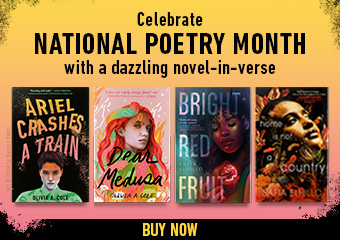All Nonfiction
- Bullying
- Books
- Academic
- Author Interviews
- Celebrity interviews
- College Articles
- College Essays
- Educator of the Year
- Heroes
- Interviews
- Memoir
- Personal Experience
- Sports
- Travel & Culture
All Opinions
- Bullying
- Current Events / Politics
- Discrimination
- Drugs / Alcohol / Smoking
- Entertainment / Celebrities
- Environment
- Love / Relationships
- Movies / Music / TV
- Pop Culture / Trends
- School / College
- Social Issues / Civics
- Spirituality / Religion
- Sports / Hobbies
All Hot Topics
- Bullying
- Community Service
- Environment
- Health
- Letters to the Editor
- Pride & Prejudice
- What Matters
- Back
Summer Guide
- Program Links
- Program Reviews
- Back
College Guide
- College Links
- College Reviews
- College Essays
- College Articles
- Back
What-the-Dickens: The Story of a Rouge Tooth Fairy by Gregory Maguire
What-the-Dickens: The Story of a Rogue Tooth Fairy by Gregory Maguire
Sometimes it takes many words and intricate lattices of sentences in order for a novel to grasp its reader, and show them an appalling murder, or a sorrowful love, or a human connection that grazes your fingertips through the ink. Yet, there are books, such as What-the-Dickens, where words are written and meant to be understood, for all readers. An amazing feat of this story is that it has the feel of a fairytale, which does the not so easy task of captivating children, but it has these shades of wonder as well, that pull in any skimming eyes of an adult. Using these factors, the author, Gregory Maguire, creates a 295 page story about how the main character Gage, tells a story to his cousins by candlelight about the journey of a tooth fairy, named What-the-Dickens.
When I first read this right before I went to sleep at night when I was younger, I saw this as a fun tale, with goofy characters, something that I could read to end a day. Honestly, it was excellent for that. When you read this, you are in a world thats smaller in size, but bigger in possibilities. You end up wondering, could that really happen? A chapter goes by without a notice, and when there are only a number of pages left, only then do you pause to try to extend that rare feeling of enchantment that is so often lacking in our normal lives.
As a teen revisiting this, I could derive the importance of trust, and believing despite what others say to persuade you otherwise. A feisty character known as Pepper at one point says, "Children talk themselves out of their convictions as they grow up and become distracted by their huge selfish selves. All the literature is consistent on this point. Children begin to think they've imagined us.” Besides the obvious parallelism of the worlds of the tooth fairies --better known as the skibbereen in the novel-- and the humans, there is also the underlying comparing of being in a world that we know exists, and being in a world that we believe exists. Unlike a lot of themes from novels, this one didn't tell me the theme, it showed me it. It wasn't a matter of the theme being black and white or shades of gray, it was a matter of allowing me to paint what I thought mattered, what I took from this whole adventure of magic, tooth fairies, and story telling.
While the story of the tooth fairy has been around since 1929, that doesn't mean that all the details are set in stone. It takes true talent for someone to take a well known and beloved folk tale, and create something that can be cherished just as much as the original. Maguire does just this, because he keeps true enough to the basic structure of the story, but tweaks it enough to modernize it and connect it to our lives. In What-the-Dickens, he was able to make a fanticiful world that still captured our reality

Similar Articles
JOIN THE DISCUSSION
This article has 0 comments.
